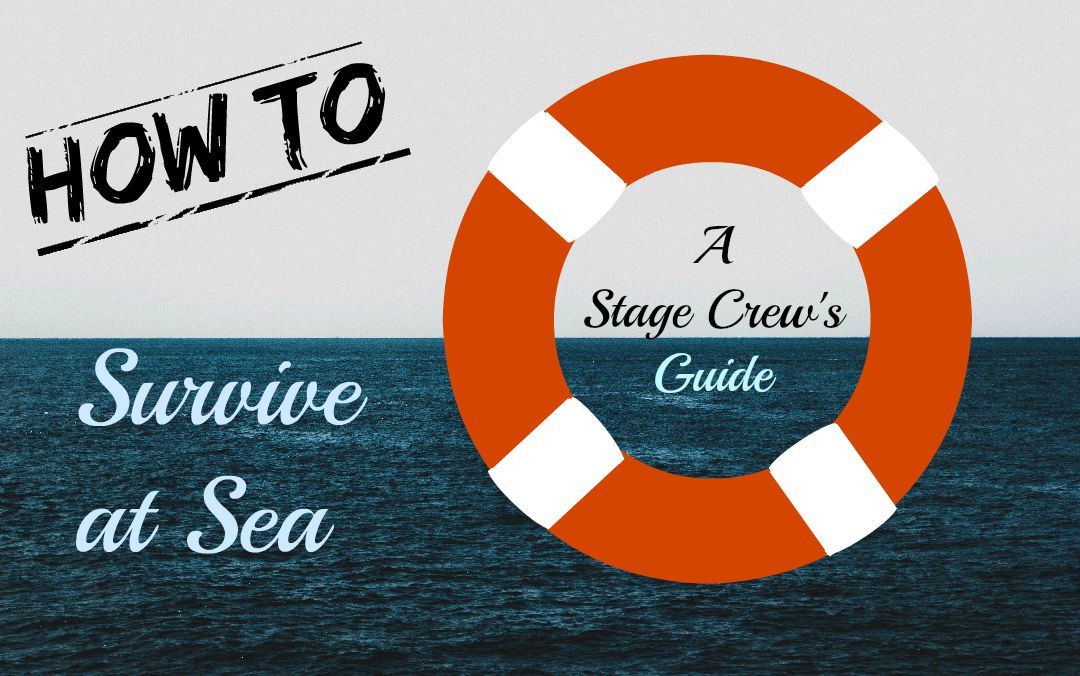Welcome to p art six of my series, How to Survive at Sea: A Stage Crew’s Guide. Click here to see last week’s post, or click here to jump to the first in the series.
art six of my series, How to Survive at Sea: A Stage Crew’s Guide. Click here to see last week’s post, or click here to jump to the first in the series.
Guess Who’s Eating at Dinner?
Now that you’ve decided where to eat, you have to tackle the complicated issue of who to eat with. On a cruise ship this isn’t complicated by your clique, but by issues of race, class, and language. Most of the people you work with are the same “class” as you – in other words, they’re all staff. Making friends with crew members (or officers) isn’t impossible, but it is difficult. They have totally different schedules, work in completely different departments, and even sleep on a different floor of the ship. There are few things on cruise ships that aren’t dictated by class, in fact, to the point where the crew sleep below the waterline, while staff and officers sleep above the waterline (that means that the hallways are smaller, there are no windows, and there are huge vault-like doors everywhere that can be sealed off in the event of a leak. It is as terrifying as it sounds).
The staff mess has different hours than the crew mess, so you may occasionally bump elbows in the crew mess when the staff mess is closed, but chances are the only place you’ll really socialize is at the crew bar, where the drinks are cheap, the people are all wearing beer goggles, and the bizarre rules about intoxication (more on that next week) are cheerfully ignored as everyone tries to forget that they’re floating through the Pacific Ocean by killing their brain cells one swallow at a time.
I worked in the Entertainment department on the cruise ship, and we were pretty unique in that our “class” and “race” were not the same – Entertainment is one of the only departments who has Filipino officers, and everyone who works in the department is staff, not crew. The makeup of the team changed as people were rotated in and out of their contracts, but it was generally 30/70 in terms of North Americans and Filipinos, and there were roughly twenty five of us in the department, with seven on my team. (One of my favourite memories of the cruise ship is playing Cards Against Humanity with the entire team at a Christmas party. At that point only five of us were Canadian or Americans; the rest were Filipino. The look on my face as I tried to explain some of the cards was priceless.)
We all worked together, and got along really well, but when it came time to eat or socialize the lines were drawn, and they weren’t drawn between “staff” and “crew” – there was very much a racial divide. Sometimes that would be as stark as a group of seven of us walking upstairs together, talking and laughing, getting our trays, getting food, and then seamlessly splitting into two groups and heading to tables at opposite ends of the food court, with the inevitability of habit that has never been questioned.
My roommate, who was also Canadian, had been working on the cruise ship for a long time. I remember walking into the staff mess with her once and seeing one of our Filipino coworkers sitting at a table by himself. I waved at him, he waved back, and she went and sat at another table. After an awkward moment I joined her, though I wish now that I hadn’t. I brought it up later and she sort of waved a hand and dismissively said that was just how things were, and it wasn’t racist, it was just that people kept to their own. I remember how shocked I was – my roommate and I weren’t exactly bosom buddies (more on that later), but I would never have thought of her as racist. And maybe she wasn’t – but she was buying into a racist system that she had been a part of for so long, she had stopped seeing it for what it was.
After that I made an effort to sit with my other coworkers, but I noticed that when I did, they had to speak in English to accommodate me; when I wasn’t there, they spoke Tagalog. (The Philippines has over a hundred languages and dialects, and almost everyone there is multilingual; what we call “Filipino,” almost everyone calls “Tagalog,” and most of them speak it, though for many it isn’t their native language.) Many of them spoke English reluctantly or not fluently, and it occurred to me that maybe the last thing they wanted was to be forced to use their second (or third!) language on their breaks, when they could already be officially reprimanded for speaking it at work. (My supervisor was known to shout “English, English!” when things slipped into Tagalog, and often they solved the problem by not using words at all. This thing would happen where someone would hand you something, make eye contact, and then grunt and nod their chin in a direction, leaving you to try to figure out exactly what they wanted you to do. It was fun. (It was not fun.))
So my forays into fighting institutionalized racism led me to realize that sometimes, things are more complicated than you can solve in one lunch-time buffet sitting. I compromised by sitting with the Filipino guys once every couple weeks, and sitting with the band most of the rest of the time. It might not have been a perfect solution – but very little is, in life as a cruise ship stage crew.
If you thought race was complicated, next week we’ll dive into the much less complicated but equally rage-inducing world of sexism on cruise ships.